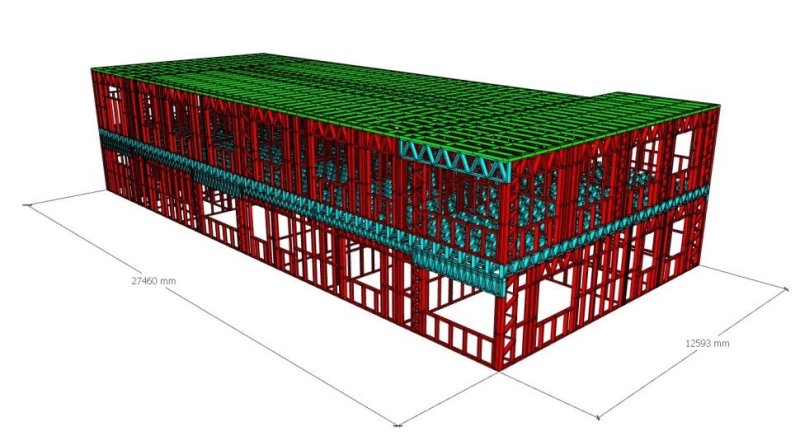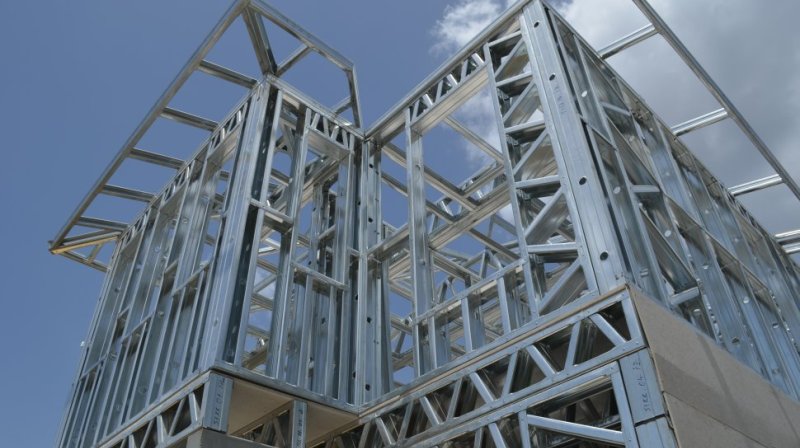The Importance of Dry Technology in Lightweight House Construction
The Construction Process of Lightweight Steel Frame Houses and the Importance of Dry Technology
Unlike traditional construction, lightweight steel-frame houses do not require mandatory technological breaks, with the concrete foundation being the only exception.
The construction site remains clean and dry, free from excess water and dripping mortar.
The Construction Process
Structural Assembly
- The process begins by assembling the structure on the concrete foundation.
- Right angles are carefully set, followed by the placement of prefabricated elements.
- The assembly guide simplifies the process, ensuring that numbered elements are installed in order.
- Precision is crucial—misalignment can lead to leveling issues and structural inconsistencies.
- Panels are secured with on-site screwing, using approximately 4,000 screws for a 100 m² house, though this may vary depending on the complexity of the roof.
Roofing and Exterior Cladding
- Once the structure is in place, the roof is installed, and the exterior walls are clad.
Electrical and Mechanical Pre-Installation
- Protective electrical conduits are integrated into the steel frame, with pre-cut openings provided during manufacturing.
Insulation and Interior Work
- Insulating the steel structure, including walls, ceilings, and roof.
- Installing windows.
- Drywalling, floor insulation, and screed concrete application.
Exterior Insulation and Facade Completion
- The walls are insulated from the outside.
- In suitable weather conditions, the final facade is applied.
- The advantage of dry technology is particularly evident here—no moisture is trapped inside due to immediate exterior insulation. Unlike traditional masonry houses, there is no need to wait for the walls to dry out, and the old belief that a house "settles" after a winter no longer applies.
Final Interior Finishing
- Once structural work is completed, the final interior surfaces are finished.
With organized work, this process is not only fast in theory but also in reality.








